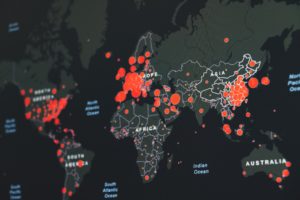
A pandemic is the worldwide spread of a new disease, according to the WHO. On the other hand, epidemics are usually only in a city, region, or country. The key is for the number of people who have the disease to be greater than the forecast number. It can become a pandemic when it spreads to other countries.
The Covid-19 Pandemic
The Covid-19 pandemic had an impact on every country in the world. It started in Wuhan, China, and it spread rapidly throughout the world. Much of the world was on lockdown during the pandemic, and many countries closed their borders. People lost their jobs as governments required that nonessential businesses close.
This pandemic hurt people who owned restaurants, gyms, and more. It also put pressure on healthcare systems because certain procedures were needed in unprecedented numbers. They needed intensive care beds and ventilators. The United States was able to get companies including Ford and General Motors to make respirators, ventilators, and face shields to help meet the demand.
Influenza Pandemics
Influenza pandemics have occurred in the past. The virus has mutated, which made it a new virus to most people. Once countries get through the initial pandemic, people start to develop some immunity to the virus. There have been several different influenza pandemics, so information on influenza is monitored every year to make sure that officials understand how the virus behaves.
The Spanish Flu Pandemic lasted from 1918 to 1920, and it killed more than 100 million people. It is the most severe pandemic in history. The second most was the Black Death, which killed more than 75 million people in the 14th century. Some of the biggest pandemics include the following:
- 541-542: Plague of Justinian
- 1346-1350: The Black Death
- 1899-1923: Sixth Cholera Pandemic
- 1918-1920: Spanish Flu
- 1957-1958: Asian Flu
- 1968-1969: Hong Kong Flu
- 2009-2010: swine Flu
- 2020: Covid-19
Phases of Pandemics
There are six phases for pandemics. It is designed to identify potential flu pandemics. The WHO recommends the following:
Phase 1: no local authorities are reporting influenza among animals that can cause disease in humans.
Phase 2: animal influenza virus is circulating and has caused infection in humans.
Phase 3: it has caused disease in small clusters of humans.
Phase 4: there is human-to-human transmission.
Phase 5: there are sustained community level outbreaks in two or more countries.
Phase 6: sustained community outbreak in another region.
